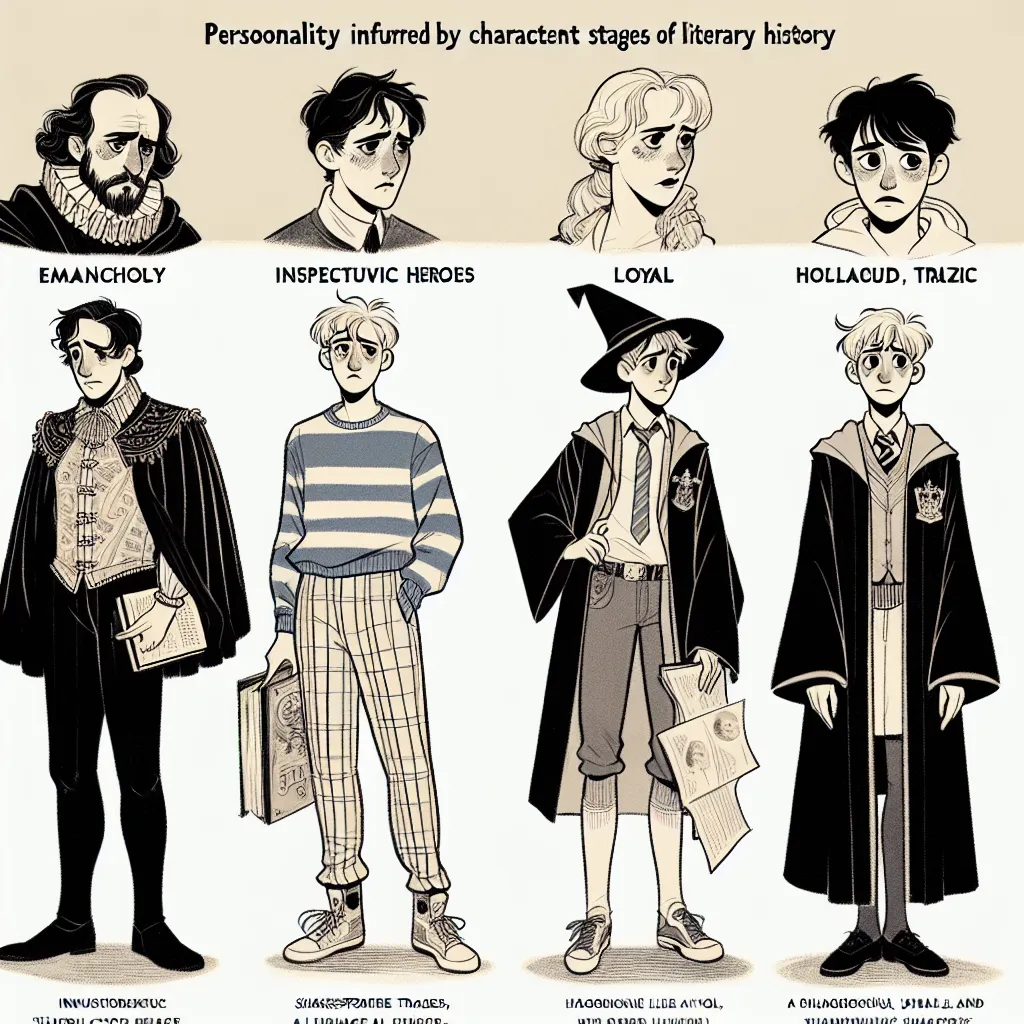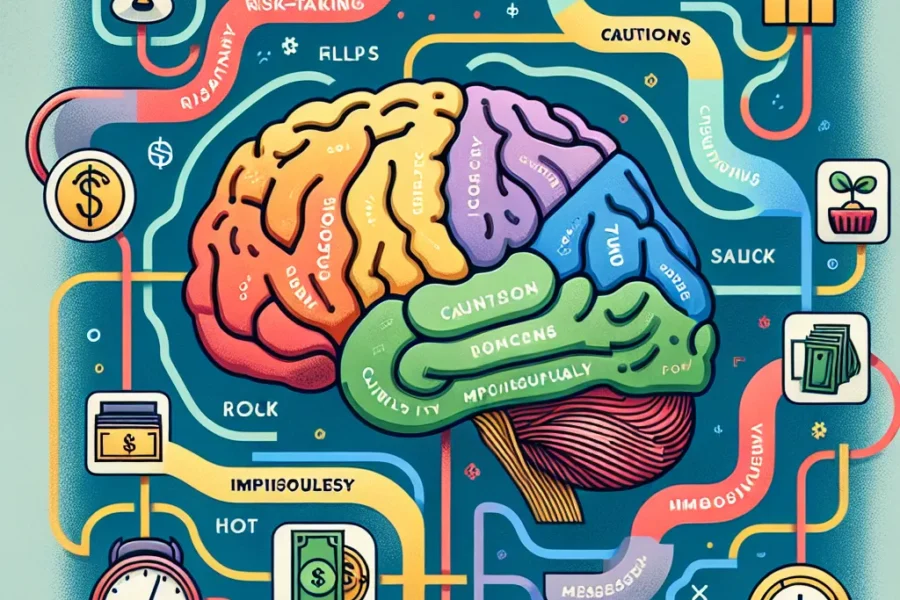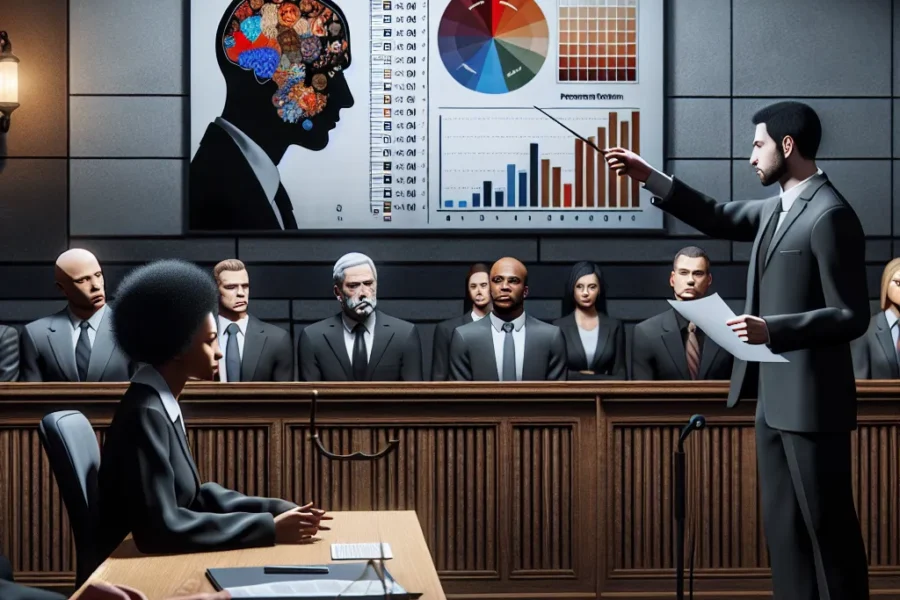Personality Types in Literature: From Hamlet to Harry Potter
Literature has always been a reflection of human nature, exploring the depths of our emotions, psyche, and experiences through characters that inhabit the pages of novels, plays, and poems. One of the most captivating aspects of literary characters is the diverse range of personalities that are depicted. From the brooding introspection of Hamlet to the courageous heart of Harry Potter, writers have given life to a vast array of personality types that continue to resonate with readers across the globe. In this article, we delve into the fascinating world of personality types in literature, examining how characters like Hamlet and Harry Potter represent distinct psychological profiles that both entertain and enlighten readers.
The Intricacy of Personality in Literature
Authors have long utilized the complexities of personality to create characters that are both believable and relatable. By drawing on a range of traits and characteristics, writers are able to craft individuals who mirror the human condition in all its diversity. But what exactly are personality types? Essentially, personality types refer to the classification of different patterns of behavior, thought, and emotion that are characteristic of an individual’s response to life’s circumstances.
One well-known framework for defining personality types is the Myers-Briggs Type Indicator (MBTI), which categorizes individuals based on four dichotomies: extraversion versus introversion, sensing versus intuition, thinking versus feeling, and judging versus perceiving. Similarly, the Big Five personality traits include openness, conscientiousness, extraversion, agreeableness, and neuroticism. Such models offer a lens through which we can examine and understand the personalities of some of literature’s most iconic characters.
Hamlet: The Quintessential Thinker
Shakespeare’s Hamlet is often considered the epitome of the introspective personality type. His soliloquies—most famously, “To be, or not to be”—exemplify the inner turmoil and intellectual depth that mark Hamlet as a thinker. Hamlet’s analytical nature, his tendency towards melancholy and indecision, and his philosophical musings about life and death present him as an individual who embodies traits associated with introversion, intuition, and feeling in the MBTI framework.
Hamlet’s journey through the play is a profound exploration of the human psyche, where he grapples with existential questions and the complexities of vengeance. Through his multifaceted personality, Shakespeare invites readers to consider the nuances of human emotion and thought, making Hamlet a figure that continues to captivate scholars and audiences alike.
Elizabeth Bennet: The Charming Realist
In contrast to Hamlet’s inward focus, Jane Austen’s Elizabeth Bennet from “Pride and Prejudice” offers a refreshing depiction of a lively and astute young woman. Elizabeth’s quick wit, keen observation skills, and unyielding spirit place her as a strong representative of the sensing and thinking traits. Her ability to navigate the social strata of her time while maintaining her moral compass showcases a balance of practicality and idealism that resonates with readers.
Elizabeth’s journey of self-discovery and her romantic entanglements with the aloof Mr. Darcy have endeared her to generations. Her personality exemplifies the blend of intelligence and emotional intelligence that serves as a guide for personal growth and understanding, highlighting Austen’s skill in creating characters that are both of their time and timeless.
Harry Potter: The Bravehearted Hero
The world of J.K. Rowling’s “Harry Potter” series introduced readers to a young wizard who embodies the archetype of the hero. Harry Potter’s defining characteristics include his bravery, loyalty, and a deep sense of justice. These traits align with the feeling and judging aspects of the MBTI, painting Harry as a character driven by his values and a desire to do what is right.
Throughout the series, Harry faces challenges that test not only his magical abilities but also his inner strength and character. His evolution from a reluctant hero to a confident leader is a classic portrayal of the hero’s journey, offering an inspiring example of how courage and determination can overcome even the darkest adversaries. Harry’s experiences serve as a powerful metaphor for readers about the importance of standing up for what is right, in spite of the risks involved.
Atticus Finch: The Moral Compass
Harper Lee’s “To Kill a Mockingbird” features Atticus Finch, an attorney who stands as a beacon of integrity and righteousness. Atticus is a character who displays a strong sense of duty, compassion, and fairness, aligning with the conscientiousness trait in the Big Five personality model. His unwavering commitment to justice and his ability to remain composed under pressure reveal a personality grounded in principle and reason.
Through the eyes of his daughter Scout, readers witness the impact of Atticus’s actions and beliefs on his children and the community around him. His determination to uphold moral values in the face of societal prejudice makes Atticus a powerful symbol of virtue and empathy, illustrating the potential of literature to engage with ethical dilemmas and societal issues.
Jay Gatsby: The Enigmatic Dreamer
F. Scott Fitzgerald’s iconic character Jay Gatsby from “The Great Gatsby” personifies the enigmatic, dream-driven personality type. Gatsby’s life is a mosaic of charm, mystery, and a relentless pursuit of an idealized love. In terms of the MBTI, Gatsby may exhibit traits of extraversion and intuition, as he is both a charismatic socialite and a visionary consumed by his lofty aspirations.
Gatsby’s mission to reclaim a lost romance and his extravagant lifestyle reflect his deeper longings and disillusionment with the American Dream. Fitzgerald masterfully crafts Gatsby as a symbol of the volatility of the Roaring Twenties and the human inclination towards self-reinvention. Gatsby’s tragic end underscores the vulnerability that often accompanies the dreamer archetype and serves as a poignant commentary on the pursuit of unattainable goals.
Conclusion
Literature offers a rich tapestry of personality types, from the introspective Hamlet to the valiant Harry Potter, providing both windows into the souls of these characters and mirrors reflecting our own complexities. These characters demonstrate the power of literature to encapsulate the full spectrum of human experience and emotion, inviting readers to see parts of themselves within the pages of beloved texts. Whether we identify with the rationality of Elizabeth Bennet, the morality of Atticus Finch, or the dreaming ambition of Jay Gatsby, the characters we encounter in literature become a vital part of our understanding of both ourselves and the myriad personality types that make up our world. As literary characters continue to evolve and respond to changing societal norms and expectations, they remain timeless testaments to the enduring allure and significance of personality in storytelling.



Leave a Comment